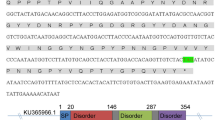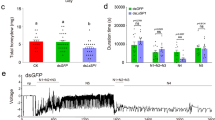Abstract
Plant Growth-Promoting Rhizobacteria (PGPR) induce systemic resistance (SR) in plants, decreasing the development of phytopathogens. The FZB42 strain of Bacillus velezensis is known to induce an SR against pathogens in various plant species. Previous studies suggested that it could also influence the interactions between plants and associated pests. However, insects have developed several strategies to counteract plant defenses, including salivary proteins that allow the insect escaping detection, manipulating defensive pathways to its advantage, deactivating early signaling processes, or detoxifying secondary metabolites. Because Brown Marmorated Stink Bug (BMSB) Halyomorpha halys is highly invasive and polyphagous, we hypothesized that it could detect the PGPR-induced systemic defenses in the plant, and efficiently adapt its salivary compounds to counteract them. Therefore, we inoculated a beneficial rhizobacterium on Vicia faba roots and soil, previous to plant infestation with BMSB. Salivary gland proteome of BMSB was analyzed by LC–MS/MS and a label-free quantitative proteomic method. Among the differentially expressed proteins, most were up-regulated in salivary glands of insects exposed to PGPR-treated plants for 24 h. We could confirm that BMSB was confronted with a stress during feeding on PGPR-treated plants. The to-be-confirmed defensive state of the plant would have been rapidly detected by the invasive H. halys pest, which consequently modified its salivary proteins. Among the up-regulated proteins, many could be associated with a role in plant defense counteraction, and more especially in allelochemicals detoxification or sequestration.


Similar content being viewed by others
Data Availability
The mass spectrometry proteomics data have been deposited to the ProteomeXchange Consortium via the PRIDE partner repository with the dataset identifier PXD021734.
Code Availability
Not applicable.
References
Andrić S, Meyer T, Ongena M (2020) Bacillus responses to plant-associated fungal and bacterial communities. Front Microbiol 11:1–9. https://doi.org/10.3389/fmicb.2020.01350
Bauwens J, Millet C, Tarayre C et al (2013) Symbiont diversity in Reticulitermes santonensis (Isoptera: Rhinotermitidae): Investigation strategy through proteomics. Environ Entomol 42:882–887
Birnbaum SSL, Abbot P (2018) Insect adaptations toward plant toxins in milkweed–herbivores systems – a review. Entomol Exp Appl 166:357–366. https://doi.org/10.1111/eea.12659
Borriss R (2011) Use of plant-associated Bacillus Strains as biofertilizers and biocontrol agents in agriculture. In: Maheshwari D (ed) Bacteria in Agrobiology: Plant Growth Responses. Springer-Verlag, Berlin, pp 41–76
Borriss R, Wu H, Gao X (2019) Secondary metabolites of plant growth promoting rhizomicroorganisms. In: Singh H, Keswani C, Reddy M et al (eds) Secondary Metabolites of Plant Growth Promoting Rhizomicroorganisms: Discovery and Applications. Springer, Singapore, pp 147–168
Chahine S, O’Donnell MJ (2011) Interactions between detoxification mechanisms and excretion in Malpighian tubules of Drosophila melanogaster. J Exp Biol 214:462–468. https://doi.org/10.1242/jeb.048884
Chaudhary R, Atamian HS, Shen Z et al (2015) Potato aphid salivary proteome: Enhanced salivation using resorcinol and identification of aphid phosphoproteins. J Proteome Res 14:1762–1778. https://doi.org/10.1021/pr501128k
Choudhary DK, Johri BN (2009) Interactions of Bacillus spp. and plants - With special reference to induced systemic resistance (ISR). Microbiol Res 164:493–513. https://doi.org/10.1016/j.micres.2008.08.007
Chowdhury SP, Hartmann A, Gao XW, Borriss R (2015) Biocontrol mechanism by root-associated Bacillus amyloliquefaciens FZB42 - A review. Front Microbiol 6:1–11. https://doi.org/10.3389/fmicb.2015.00780
Cianferoni F, Graziani F, Dioli P, Ceccolini F (2018) Review of the occurrence of Halyomorpha halys (Hemiptera: Heteroptera: Pentatomidae) in Italy, with an update of its European and World distribution. Biol 73:599–607. https://doi.org/10.2478/s11756-018-0067-9
Conrath U, Pieterse CMJ, Mauch-mani B (2002) Priming in plant-pathogen interactions. Trends Plant Sci 7:210–216. https://doi.org/10.1016/S1360-1385(02)02244-6
Erb M, Reymond P (2019) Molecular interactions between plants and insect herbivores. Annu Rev Plant Biol 70:527–557. https://doi.org/10.1146/annurev-arplant-050718-095910
Fan B, Blom J, Klenk HP, Borriss R (2017) Bacillus amyloliquefaciens, Bacillus velezensis, and Bacillus siamensis form an “Operational group B. amyloliquefaciens” within the B. subtilis species complex. Front Microbiol 8:1–15. https://doi.org/10.3389/fmicb.2017.00022
Farzand A, Moosa A, Zubair M et al (2019) Suppression of Sclerotinia sclerotiorum by the induction of systemic resistance and regulation of antioxidant pathways in tomato using fengycin produced by Bacillus amyloliquefaciens FZB42. Biomolecules 9:613. https://doi.org/10.3390/biom9100613
Felton GW, Tumlinson JH (2008) Plant-insect dialogs: complex interactions at the plant-insect interface. Curr Opin Plant Biol 11:457–463. https://doi.org/10.1016/j.pbi.2008.07.001
Gadhave KR, Gange AC (2016) Plant-associated Bacillus spp. alter life-history traits of the specialist insect Brevicoryne brassicae L. Agric for Entomol 18:35–42. https://doi.org/10.1111/afe.12131
Hoebeke ER, Carter ME (2003) Halyomorpha halys (Stål) (Heteroptera: Pentatomidae): A polyphagous plant pest from Asia newly detected in North America. Proc Entomol Soc Washingt 105:225–237
Jariyapan N, Roytrakul S, Paemanee A et al (2012) Proteomic analysis of salivary glands of female Anopheles barbirostris species A2 (Diptera: Culicidae) by two-dimensional gel electrophoresis and mass spectrometry. Parasitol Res 111:1239–1249. https://doi.org/10.1007/s00436-012-2958-y
Kumar A, Patel JS, Meena VS, Srivastava R (2019) Recent advances of PGPR based approaches for stress tolerance in plants for sustainable agriculture. Biocatal Agric Biotechnol 20:101271. https://doi.org/10.1016/j.bcab.2019.101271
Li X, Schuler MA, Berenbaum MR (2007) Molecular mechanisms of metabolic resistance to synthetic and natural xenobiotics. Annu Rev Entomol 52:231–253. https://doi.org/10.1146/annurev.ento.51.110104.151104
Louis J, Singh V, Shah J (2012) Arabidopsis thaliana —Aphid Interaction. Arab B 10:e0159. https://doi.org/10.1199/tab.0159
Lugtenberg B, Kamilova F (2009) Plant-growth-promoting rhizobacteria. Annu Rev Microbiol 63:541–556. https://doi.org/10.1146/annurev.micro.62.081307.162918
Ma M, Jia H, Cui X et al (2018) Isolation of carboxylesterase (esterase FE4) from Apis cerana cerana and its role in oxidative resistance during adverse environmental stress. Biochimie 144:85–97. https://doi.org/10.1016/j.biochi.2017.10.022
Magalhães GS, Junqueira-de-Azevedo ILM, Lopes-Ferreira M et al (2006) Transcriptome analysis of expressed sequence tags from the venom glands of the fish Thalassophryne nattereri. Biochimie 88:693–699. https://doi.org/10.1016/j.biochi.2005.12.008
Martinez-Medina A, Flors V, Heil M et al (2016) Recognizing plant defense priming. Trends Plant Sci 21:818–822. https://doi.org/10.1016/j.tplants.2016.07.009
Matilla M, Krell T (2018) Plant growth promotion and biocontrol mediated by plant-associated bacteria BT. In: Egamberdieva D, Ahmad P (eds) Plant Microbiome Stress: Response. Springer Nature, Singapore, pp 45–80
Ongena M, Jacques P (2008) Bacillus lipopeptides: versatile weapons for plant disease biocontrol. Trends Microbiol 16:115–125. https://doi.org/10.1016/j.tim.2007.12.009
Peiffer M, Felton G (2014) Insights into the saliva of the brown marmorated stink bug Halyomorpha halys (Hemiptera: Pentatomidae). PLoS ONE 9:e88483. https://doi.org/10.1371/journal.pone.0088483
Perez-Riverol Y, Csordas A, Bai J et al (2019) The PRIDE database and related tools and resources in 2019: Improving support for quantification data. Nucleic Acids Res 47:D442–D450. https://doi.org/10.1093/nar/gky1106
Pieterse CMJ, Zamioudis C, Berendsen RL et al (2014) Induced systemic resistance by beneficial microbes. Annu Rev Phytopathol 52:347–375. https://doi.org/10.1146/annurev-phyto-082712-102340
Pineda A, Dicke M, Pieterse CMJ, Pozo MJ (2013) Beneficial microbes in a changing environment: Are they always helping plants to deal with insects? Funct Ecol 27:574–586. https://doi.org/10.1111/1365-2435.12050
Pineda A, Zheng SJ, van Loon JJA et al (2010) Helping plants to deal with insects: The role of beneficial soil-borne microbes. Trends Plant Sci 15:507–514. https://doi.org/10.1016/j.tplants.2010.05.007
Rice KB, Bergh CJ, Bergmann EJ et al (2014) Biology, ecology, and management of brown marmorated stink bug (Hemiptera: Pentatomidae). J Integr Pest Manag 5:1–13. https://doi.org/10.1603/IPM14002
Schlesinger MJ (1990) Heat shock proteins. J Biol Chem 265:12111–12114. https://doi.org/10.4149/av_2011_03_189
Serteyn L, Francis F (2019) Insight into salivary gland proteomes of two polyphagous stink bugs: Nezara viridula L. and Halyomorpha halys Stål. Proteomics 1800436:2–5. https://doi.org/10.1002/pmic.201800436
Serteyn L, Ponnet L, Saive M et al (2019) Changes of feeding behavior and salivary proteome of brown marmorated stink bug when exposed to insect - induced plant defenses. Arthropod Plant Interact 14:101–112. https://doi.org/10.1007/s11829-019-09718-8
Serteyn L, Quaghebeur C, Ongena M et al (2020) Induced systemic resistance by a plant growth-promoting rhizobacterium impacts development and feeding behavior of aphids. Insects 11:234. https://doi.org/10.3390/insects11040234
Sharma A, Khan AN, Subrahmanyam S et al (2014) Salivary proteins of plant-feeding hemipteroids-implication in phytophagy. Bull Entomol Res 104:117–136. https://doi.org/10.1017/S0007485313000618
Stahl E, Hilfiker O, Reymond P (2018) Plant–arthropod interactions: who is the winner? Plant J 93:703–728. https://doi.org/10.1111/tpj.13773
Tahir HAS, Gu Q, Wu H et al (2017) Bacillus volatiles adversely affect the physiology and ultra-structure of Ralstonia solanacearum and induce systemic resistance in tobacco against bacterial wilt. Sci Rep 7:1–15. https://doi.org/10.1038/srep40481
Tang QL, Ma KS, Hou YM, Gao XW (2017) Monitoring insecticide resistance and diagnostics of resistance mechanisms in the green peach aphid, Myzus persicae (Sulzer) (Hemiptera: Aphididae) in China. Pestic Biochem Physiol 143:39–47. https://doi.org/10.1016/j.pestbp.2017.09.013
Tang T, Wu C, Li J et al (2012) Stress-induced HSP70 from Musca domestica plays a functionally significant role in the immune system. J Insect Physiol 58:1226–1234. https://doi.org/10.1016/j.jinsphys.2012.06.007
van Bel AJE, Will T (2016) Functional evaluation of proteins in watery and gel saliva of aphids. Front Plant Sci 7:1–19. https://doi.org/10.3389/fpls.2016.01840
Van Loon LC (2007) Plant responses to plant growth-promoting rhizobacteria. Eur J Plant Pathol 119:243–254. https://doi.org/10.1007/s10658-007-9165-1
Wallner AM, Hamilton GC, Nielsen AL et al (2014) Landscape factors facilitating the invasive dynamics and distribution of the brown marmorated stink bug, Halyomorpha halys (Hemiptera: Pentatomidae), after arrival in the United States. PLoS ONE 9:e95691. https://doi.org/10.1371/journal.pone.0095691
Wermelinger B, Wyniger D, Forster B (2008) First records of an invasive bug in Europe: Halyomorpha halys Stal (Heteroptera: Pentatomidae), a new pest on woody ornamentals and fruit trees? Mitteilungen Der Schweizerischen Entomol Gesellschaft 81:1–8
Wojda I (2017) Temperature stress and insect immunity. J Therm Biol 68:96–103. https://doi.org/10.1016/j.jtherbio.2016.12.002
Wu L, Huang Z, Li X et al (2018) Stomatal closure and SA-, JA/ET-signaling pathways are essential for Bacillus amyloliquefaciens FZB42 to restrict leaf disease caused by Phytophthora nicotianae in Nicotiana benthamiana. Front Microbiol 9:1–8. https://doi.org/10.3389/fmicb.2018.00847
Xie S, Jiang H, Ding T et al (2018) Bacillus amyloliquefaciens FZB42 represses plant miR846 to induce systemic resistance via a jasmonic acid-dependent signalling pathway. Mol Plant Pathol 19:1612–1623. https://doi.org/10.1111/mpp.12634
Xie S, Yu H, Li E et al (2019) Identification of miRNAs involved in Bacillus velezensis FZB42-activated induced systemic resistance in maize. Int J Mol Sci 20:5057. https://doi.org/10.3390/ijms20205057
Xie Y, Wu L, Zhu B et al (2017) Digital gene expression profiling of the pathogen-resistance mechanism of Oryza sativa 9311 in response to Bacillus amyloliquefaciens FZB42 induction. Biol Control 110:89–97. https://doi.org/10.1016/j.biocontrol.2017.04.009
Zehnder G, Kloepper J, Tuzun S et al (1997) Insect feeding on cucumber mediated by rhizobacteria-induced plant resistance. Entomol Exp Appl 83:81–85. https://doi.org/10.1023/A:1002907604294
Zhu G, Bu W, Gao Y, Liu G (2012) Potential geographic distribution of brown marmorated stink bug invasion (Halyomorpha halys). PLoS ONE 7:e31246. https://doi.org/10.1371/journal.pone.0031246
Acknowledgements
The authors thank professor R. Borriss of Humboldt University, who kindly provided the FZB42 strain of Bacillus velezensis.
Author information
Authors and Affiliations
Contributions
LS, MO, and FF designed the experiments; LS, OL, and LI led the experiments; DB and GM performed the proteomic analysis; LS, OL, and LI interpreted the results; LS wrote the manuscript; all authors read and approved the manuscript.
Corresponding author
Ethics declarations
Ethics approval
Not applicable.
Consent to participate
Not applicable.
Consent for publication
Not applicable.
Conflicts of interest
The authors declare that they have no conflict of interest.
Rights and permissions
About this article
Cite this article
Serteyn, L., Lourme, O., Iannello, L. et al. Up-Regulated Salivary Proteins of Brown Marmorated Stink Bug Halyomorpha halys on Plant Growth-Promoting Rhizobacteria-Treated Plants. J Chem Ecol 47, 747–754 (2021). https://doi.org/10.1007/s10886-021-01293-8
Received:
Revised:
Accepted:
Published:
Issue Date:
DOI: https://doi.org/10.1007/s10886-021-01293-8




